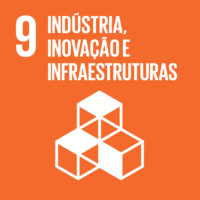Ciência_Iscte
Publicações
Descrição Detalhada da Publicação
Usability and User Experience (AHFE 2022)
Ano (publicação definitiva)
2022
Língua
Inglês
País
Estados Unidos da América
Mais Informação
Web of Science®
Esta publicação não está indexada na Web of Science®
Scopus
Esta publicação não está indexada na Scopus
Google Scholar
Esta publicação não está indexada no Overton
Abstract/Resumo
In a time of digital disruption, users are deciding how they want banks to respond and exceed their expectations. The banking industry since pandemic has shifted servicing dramatically from its traditional branches to become far more digitally flexible. Banks rushed to face-lift the front-end look and feel and enable non-essential digital services without asking users their needs. Thus, this bank attitude as greater impact on building a good digital banking customer experience that leads the users to fully adopt digital. To have a clear vision of how banks can stand out to a successful digital transformation we interview 634 digital bank users from the generation XYZ. To find out about the digital banking perceptions of Generation Z (born 1997-2012), Generation Y (born 1981-1996), and Generation X (born 1965-1980) we perform a qualitative analysis using Leximancer content analysis software to determine differences and characteristics of users’ attitudes toward digital banking. The findings highlighted nineteen concepts (transfers, bank, channels, products, digital, availability, anywhere, services, operations, use, account, savings, speed, costs, information, options, price, complex, and market) grouped in eight key themes perceived by users using digital banking channels, namely: transfers, availability, use, speed, information, price, complex and market. The three tags categories generation XYZ result of the presence of highly connected with concepts or independent variables showing prominence between X-generation and availability and services concept, Y-generation, and market, anywhere, bank and operation concepts, Z-generation, and transfers concepts. These results show that digital bank users are concerned about price, speed of transfers and product information, the anywhere availability of services and operations in the financial market, with some constraints about the complexity of options used to manage their accounts and savings. More the Y-generation (middle age) take more advantage of digital banking to explore bank/financial market and perform operations anywhere, the X-generation (older age) look digital banking mainly for the availability of services and Z-generation (younger age) simple for transfers. This study contributes to understanding the use and preference of digital banking, allowing us to propose a new conceptual model to explain the digital banking usage, helps to identify what is important for each XYZ generation to increase their adoption of digital banking and alerts to the use complex of multiple options that probably are not the focus to successfully used by this generations. Highlighting the users’ perceptions is important for the bank industry to develop digital banking features that align with users’ expectations and to increase the success of digital transformation by shifting servicing dramatically from a brick-and-mortar stalwart to become far more business digitally flexible.
Agradecimentos/Acknowledgements
--
Palavras-chave
Digital banking,Generation XYZ,Qualitative analysis,User technology adoption
Classificação Fields of Science and Technology
- Ciências da Computação e da Informação - Ciências Naturais
Registos de financiamentos
| Referência de financiamento | Entidade Financiadora |
|---|---|
| UIDB/04466/2020 | Fundação para a Ciência e a Tecnologia |
Contribuições para os Objetivos do Desenvolvimento Sustentável das Nações Unidas
Com o objetivo de aumentar a investigação direcionada para o cumprimento dos Objetivos do Desenvolvimento Sustentável para 2030 das Nações Unidas, é disponibilizada no Ciência_Iscte a possibilidade de associação, quando aplicável, dos artigos científicos aos Objetivos do Desenvolvimento Sustentável. Estes são os Objetivos do Desenvolvimento Sustentável identificados pelo(s) autor(es) para esta publicação. Para uma informação detalhada dos Objetivos do Desenvolvimento Sustentável, clique aqui.

 English
English


